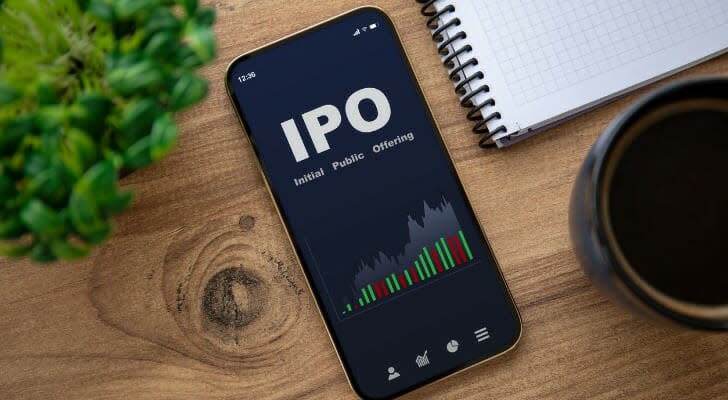Can I Buy IPO Stocks?
What do Spotify, General Motors and Uber have in common? Each had an initial public offering (IPO), generating billions of dollars and loads of press. Plus, investors finally had the opportunity to buy shares in these renowned companies. IPOs can create profitable new investments – but can also be tremendous flops. Here’s what investors should know about what to expect when investing in an IPO. You can also work with a financial advisor to help analyze how investing in an IPO could impact your personal financial situation and overall portfolio.
What Is an IPO?
An initial public offering (IPO) is when a privately owned company converts its shares to sell to the public. A company conducts an IPO to exchange sole ownership of the business for a sizable chunk of cash. Profits from going public through an IPO can finance business expansion, help a company make a splash in the public eye or repay money borrowed to start the business.
Public investors don’t purchase stock directly from the company during an IPO. Instead, the company hires an underwriting bank or brokerage to register and disburse shares. The underwriter works with attorneys, accountants, and Securities and Exchange Commission (SEC) professionals to create a financial profile of the company. Then, the company registers its profile with the SEC and gains permission to go public. When this process is complete, the underwriter gathers several banks and brokers to sell shares in the IPO.
A company might not generate its desired return through an IPO. After the first offering, it can use secondary offerings to increase its capital. Secondary offerings can come from major investors, usually financial institutions, that purchased shares during the IPO. Shares purchased during this type of offer don’t dilute stock value. However, the company can also create new shares for purchase in a secondary offering. This second option is known as a dilutive secondary offering and can diminish the value of existing shares.
Who Can Buy and How to Buy IPO Stocks
IPO stocks are available to a narrow slice of investors. Generally, family and friends of the company owners have first dibs on shares in an IPO. Employees of the company who have received incentive stock options can also acquire pre-IPO shares. Financial institutions and investment firms with a close relationship with the banks and brokers facilitating the IPO usually pick up the remaining shares, and the average investor doesn’t have a chance to purchase any. Because IPOs are a selective process, even giant hedge funds and investment firms might experience the same exclusion as small-dollar investors.
Your position in the market will determine how you buy IPO stock. There are many different methods that can help you buy IPO stock, depending on your situation and what your investment portfolio looks like. Your method options are:
Purchase Shares During the IPO
If you’re an insider with the company or the organizations guiding the IPO, you likely will have first access to the offering. As a result, when the IPO commences, you can purchase available shares.
Use an Exchange-Traded Fund
If you aren’t a market insider, don’t worry – you’re in the majority and have other options. For example, you can put money into exchange-traded funds (ETFs) that prioritize IPOs, such as the First Trust U.S. Equity Opportunities ETF (FPX).
Invest With a Broker Who Participates in IPOs
Your broker might give you access to IPOs. For example, TD Ameritrade takes part in IPOs and occasionally gives its clients a chance to trade shares. However, there’s no guarantee your broker will participate in the IPO you’re most interested in because offerings have varying levels of exclusivity.
Become a Customer of a Private Bank
Regional and local banks are typically privately owned. However, these banks go public from time to time. When they do, they offer accountholders shares during their IPOs. Therefore, opening an account with the thrift bank down the street might prove a fruitful investment.
Steps For Buying an IPO Stock
Buying an IPO stock requires considerable preparation. Follow these steps to position yourself to trade during an IPO:
Open an account with a broker that allows IPO trading, such as TD Ameritrade, Fidelity or SoFi.
Qualify to trade IPO stocks. Stipulations vary among brokers. For example, Fidelity requires its customers to be part of its Fidelity Private Client Group and invest at least $100,000 in Fidelity products. On the other hand, SoFi Active Investing members have no minimums to get started.
Attempt to buy shares. You can initiate a purchase through your broker. However, you might not be able to buy shares if other investors act more quickly and snap up available stocks.
Initiate a conditional offer. Your offer goes in before the IPO price is known, so accurate estimation is key. However, you will have a short opportunity to adjust your offer once the price becomes public to match the share value.
What to Know Before Investing in An IPO
IPOs aren’t for the faint of heart. Therefore, it’s essential to get in-depth by examining the following elements of an IPO:
Gain familiarity with industry-specific terms: These terms include red herring prospectus, price band, minimum subscription and floor price. Otherwise, you can quickly get lost in the process and fall behind in the race to acquire shares.
Check out why the company is conducting an IPO: Business-related motives, such as growing the company’s services or getting out of debt, show that the firm is focused on financial success.
Examine the company’s viability: A trending company might have momentary success, but businesses worth investing in can demonstrate their ability to disrupt the market permanently. If the business model seems murky, it might be best to look for other opportunities.
Review valuations: Estimates before the IPO can help you understand if the shares are overpriced.
Create a plan: Do you want to turn a profit by selling the shares as quickly as possible or hang onto the shares and see how the company performs? In either scenario, knowing your approach is crucial before making a financial commitment.
Differentiate between an IPO and a direct listing: A company performing an IPO uses intermediaries, such as banks and brokers, to facilitate the trading of new shares and can expand access to shares if they receive a lot of action. On the other hand, shares in a direct listing come from existing shareholders and might have limits on trade activity.
Risks of Investing in an IPO
In general, trading stocks is risky, and IPOs are no different. There are a number of risks that you can consider before investing in an IPO that should help you realize if it is a good investment option for your portfolio that can help you achieve your goals.
One of the largest risks is that IPO prices can be short-lived bubbles. In other words, the first 24 hours of an IPO might seem promising, but prices can quickly shrink along with investor enthusiasm. Plus, company size and success don’t necessarily make for incredible IPOs. Famous companies like Facebook and Groupon had strong openings that quickly fizzled by billions of dollars.
Although IPOs usually offer a reduced price compared to the public stock price established afterward, you might only save a few cents on the dollar. In addition, the deal isn’t worth it if the stock price dips after the IPO. IPOs often come from companies without a substantial track record. As a result, your investment might be more of a leap of faith than a decision based on years of a company’s demonstrated success.
The Bottom Line
IPOs can be exciting rollercoaster rides for investors looking for opportunities with up-and-coming names in the business world. Your investments can rise with the success of a new business offering access to its stock for the first time. However, investing in IPOs can be challenging because companies often restrict access to shares and share value can fluctuate in the blink of an eye. Therefore, it’s recommended to do extensive research before participating in an IPO.
Tips for Investing in IPOs
Investor sentiment and limited financial information can make it tough to discern reality during an IPO. A financial advisor can objectively analyze the situation to help you see if a new company’s stock belongs in your portfolio. Finding the right financial advisor that fits your needs doesn’t have to be hard. SmartAsset’s free tool matches you with up to three financial advisors who serve your area, and you can interview your advisor matches at no cost to decide which one is right for you. If you’re ready to find an advisor who can help you achieve your financial goals, get started now.
IPOs aren’t the only way to invest in younger companies. If you want to diversify your assets with new business endeavors, use this guide for how to invest in startups.
Photo credit: ©iStock.com/Prykhodov, ©iStock.com/Arsenli Palivoda, ©iStock.com/Natali_Mis
The post How to Invest in an IPO appeared first on SmartAsset Blog.



